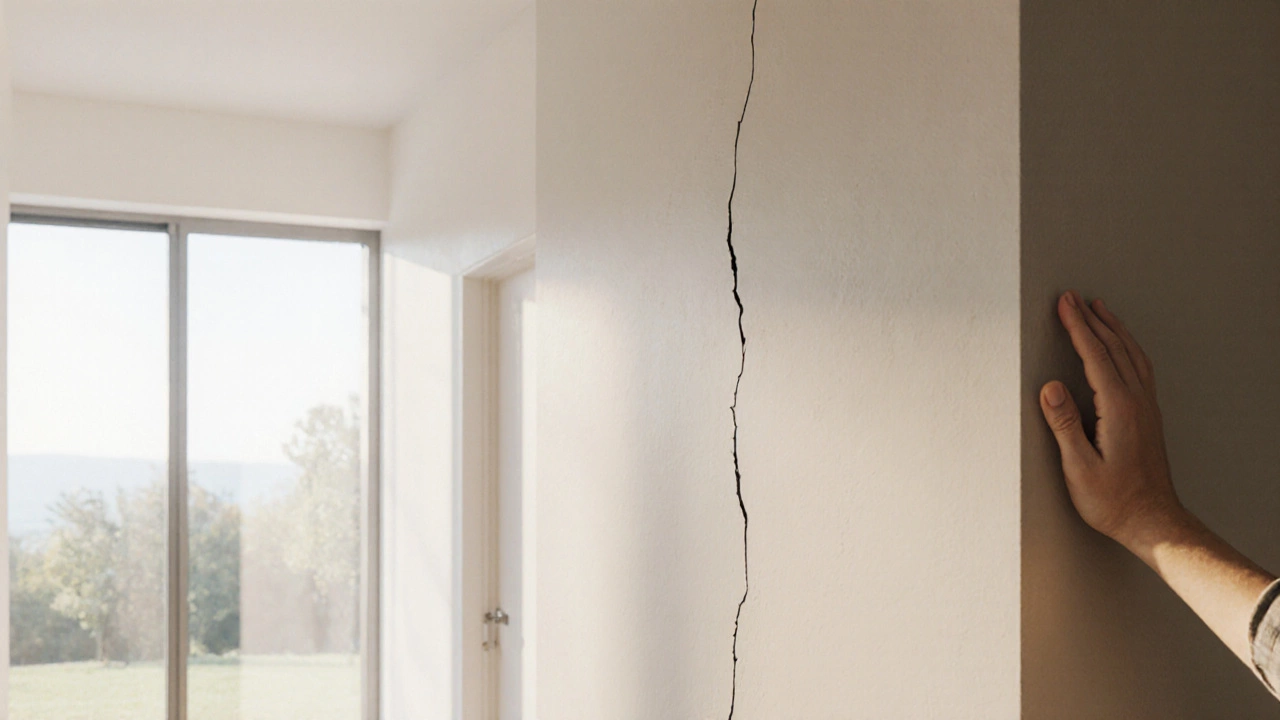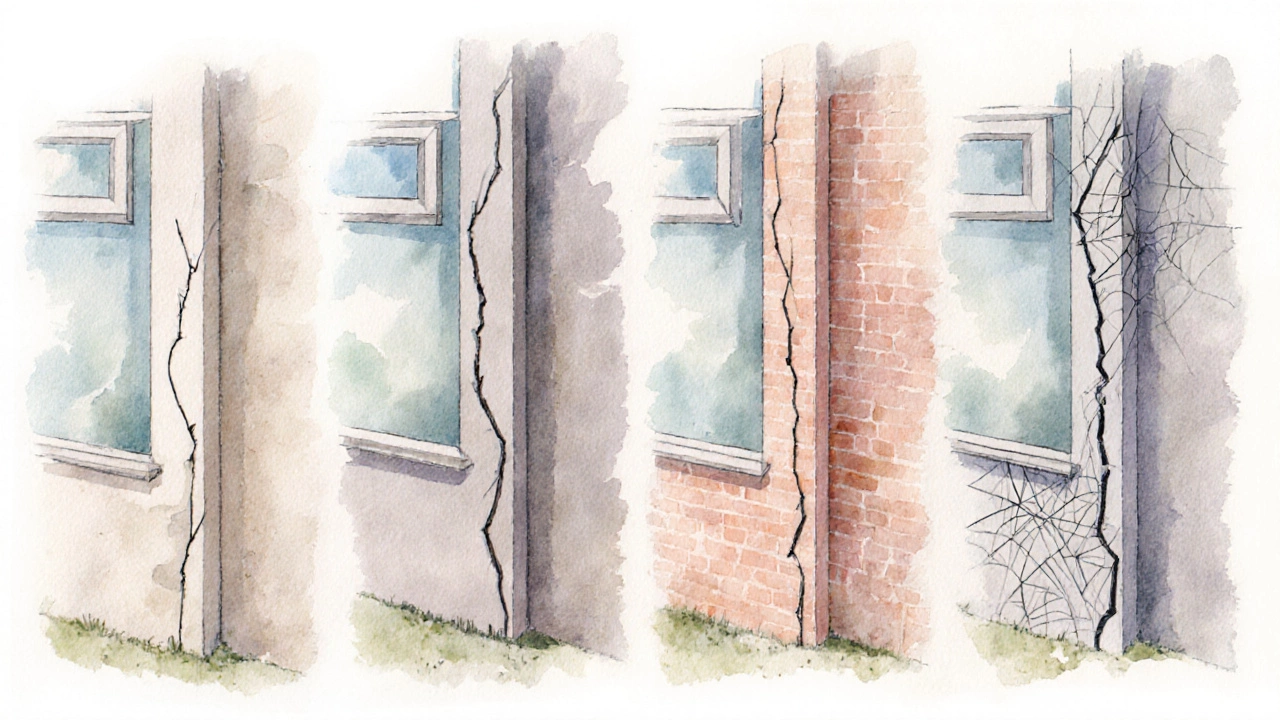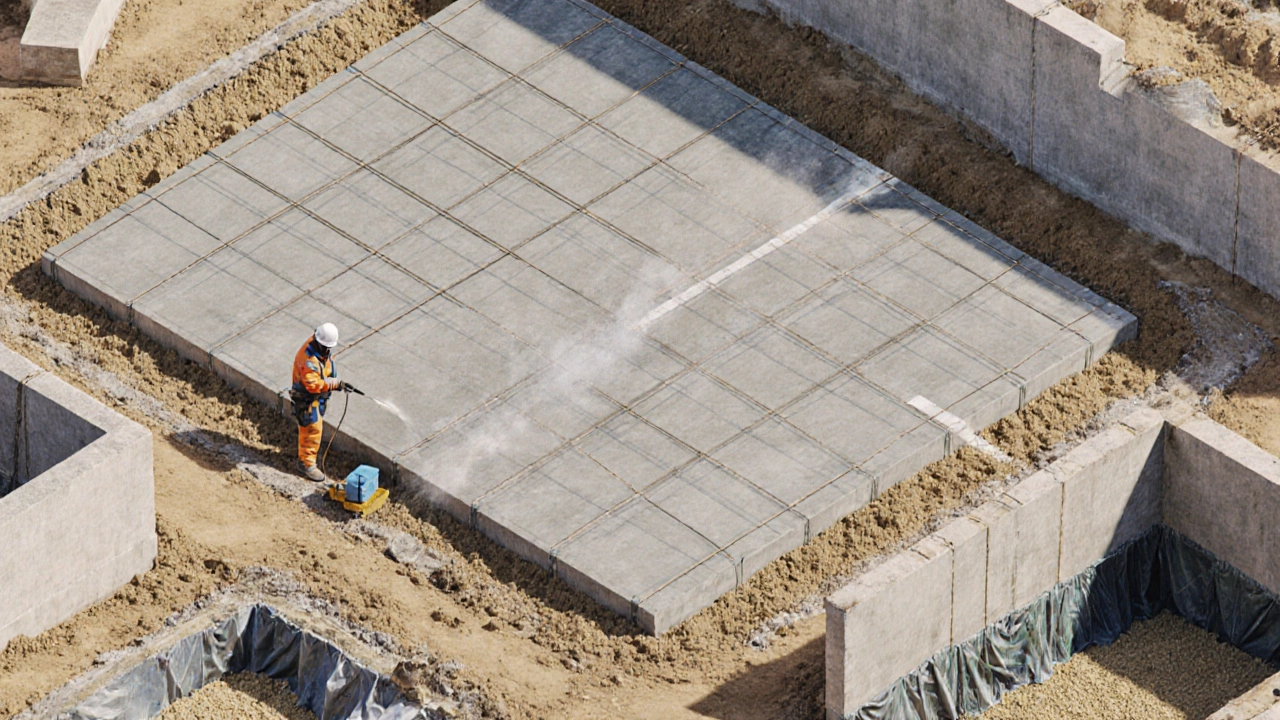Do New Build Homes Develop Cracks? Causes, Signs & Fixes

New Build Crack Severity Checker
Assess Your Crack
Enter details about the crack you've noticed to determine if it requires professional attention.
When you move into a New Build Home is a recently completed residential property, usually under a 10‑year warranty, the last thing you want to see is a crack in the wall. It feels like a red flag, right? The good news is that not every line in the plaster means disaster. By knowing why new build cracks appear, where they matter most, and how to act, you can keep your house safe and your peace of mind intact.
Why new‑build owners worry about cracks
Most buyers assume a brand‑new house is flawless. In reality, the building process involves a lot of drying, shrinking, and settling. When the structure adjusts, tiny fissures can pop up. If you ignore them, a small problem can become a costly repair, especially if the crack signals a deeper structural issue.
Common types of cracks in new builds
Not all cracks are created equal. Below is a quick guide to the most frequent ones you’ll encounter.
- Shrinkage cracks: These appear as hairline lines in plaster or brickwork, usually within the first few months as concrete and mortar lose moisture.
- Settlement cracks: As the foundation settles into the soil, you may see vertical cracks near doors and windows.
- Thermal movement cracks: Temperature changes cause materials to expand and contract, leaving diagonal or spider‑web patterns.
- Structural cracks: Wider than 3 mm, often horizontal, and located around load‑bearing walls or columns. These need immediate professional attention.
How to spot a serious crack
When you’re walking through your new build, keep an eye on these red‑flag details:
- Width - anything over 3 mm could be structural.
- Location - cracks near load‑bearing walls, the foundation, or ceiling joints are more concerning.
- Pattern - stair‑step cracks in brickwork suggest movement, while random hairlines usually aren’t serious.
- Progression - mark the crack and check it after a week; if it’s growing, call in a professional.

Factors that increase the risk of cracks
Several conditions can make a new build more prone to cracking:
- Soil type - Expansive clay swells when wet and shrinks when dry, exerting pressure on foundations.
- Foundation design - Shallow strip foundations are more vulnerable than deeper piled foundations, especially on soft ground.
- Construction quality - Poor concrete mix, insufficient curing time, or missing reinforcement can weaken the structure.
- Weather conditions - Rapid temperature swings or heavy rain during the curing phase accelerate shrinkage.
- Design details - Large open‑plan spaces without adequate expansion joints can concentrate stress.
What builders do to prevent cracks
Reputable developers follow a set of best practices aimed at keeping the building stable:
- Use high‑quality concrete with the right water‑cement ratio.
- Install control joints in floors and large wall sections to allow intentional movement.
- Provide proper curing - keeping the slab moist for at least seven days.
- Place reinforcement steel (rebar) where tensile forces are expected.
- Carry out soil investigations and, if needed, treat the ground with lime or geotextiles.
What to do if you see a crack
First, don’t panic. Follow these steps to assess the situation:
- Document - Take clear photos, note the location, length, and width.
- Check the warranty - Most new builds come with a 10‑year structural warranty; locate the policy details.
- Contact the builder - Report the crack in writing, attach your photos, and ask for an inspection.
- Get a professional opinion - If the builder’s response is vague, hire a chartered Structural Engineer to assess the risk.
- Agree on remedial work - Minor hairline cracks often get filled with flexible filler. Wider or structural cracks may need underpinning, stitching, or reinforcement.

Checklist for new‑build owners (first 12 months)
Keeping a simple log can save you headaches later. Review this list each month:
- Check all external walls for new lines after heavy rain or temperature change. \n
- Inspect lintels and window frames for any distortion.
- Monitor doors and windows for sticking - a sign of shifting walls.
- Record any movement you notice in the roofline or ceiling plaster.
- Review the builder’s snagging report and ensure all items are completed.
- Keep warranty paperwork and inspection reports in one folder.
Comparison of crack types and typical remedies
| Crack Type | Typical Cause | Common Remedy |
|---|---|---|
| Hairline shrinkage | Drying of concrete/mortar | Flexible filler; monitor for growth |
| Vertical settlement | Foundation adjusting to soil | Underpinning or re‑leveling if >5 mm movement |
| Thermal expansion | Temperature swings | Install expansion joints; use elastic sealant |
| Structural (wide/horizontal) | Load‑bearing failure, design flaw | Engineered repair - steel stitching, jacketing |
Key takeaways
- Most cracks in the first year are harmless shrinkage.
- Width, location, and whether the crack widens are the main danger signals.
- Good construction practices drastically cut the risk.
- Document everything and act quickly if a crack looks structural.
What size of crack needs a structural engineer?
Any crack wider than 3 mm, especially if it’s horizontal, stair‑step, or near a load‑bearing wall, should be examined by a chartered structural engineer.
Do warranty policies cover cracks?
Most new‑build warranties cover structural defects for up to 10 years. Cosmetic hairline cracks are usually excluded, but you should check the specific terms.
Can I fix a crack myself?
For minor hairline cracks you can use a flexible filler and repaint. For anything wider, moving, or near structural elements, always involve a professional.
How long does it take for new‑build cracks to appear?
Most appear within the first six months as concrete cures and the building settles. Some settlement cracks can emerge up to two years later, especially after major weather changes.
Is moisture a cause of cracks?
Excess moisture can accelerate shrinkage and cause plaster to delaminate, leading to surface cracks. Persistent dampness behind walls may also weaken masonry over time.